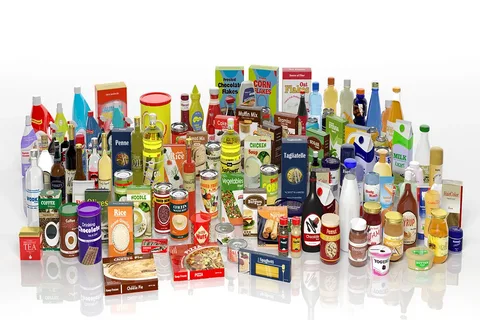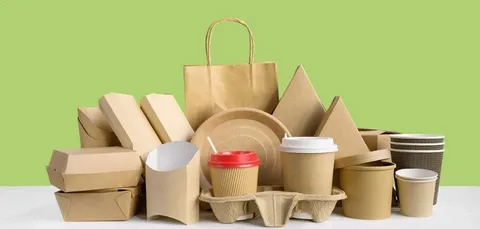Packaging plays a crucial role in product preservation, user convenience, and brand identity. Among the many formats available, tubed packaged goods stand out due to their versatility and practicality. Tubes are used extensively across diverse industries including cosmetics, pharmaceuticals, food, and industrial applications. Their unique design ensures easy dispensing, hygienic application, and product protection, making them a preferred choice for many manufacturers.
This article delves into the features, materials, applications, advantages, challenges, and innovations of tubed packaged goods, providing a comprehensive overview along with a detailed FAQ section.
What Are Tubed Packaged Goods?
Tubed packaged goods refer to products encased in tubular containers, typically made of flexible or semi-rigid materials such as plastic, aluminum, or laminates. The tube is sealed at one end and equipped with a dispensing nozzle and a cap at the other, enabling the product inside to be squeezed out in controlled amounts. Tubes are ideal for containing products with a viscous, paste-like, or semi-solid consistency.
Benefits of Tubed Packaging
Controlled Dispensing
Tubes allow consumers to dispense precise amounts of product, minimizing waste and making application easy and efficient.
Hygiene and Protection
By limiting exposure to air and contaminants, tubes protect the contents from microbial growth and oxidation, maintaining product integrity.
Convenience and Portability
Lightweight and compact, tubes are easy to carry and store, making them popular for travel and on-the-go usage.
Cost-Effective Manufacturing
Tube production is typically less costly compared to rigid containers, and their light weight reduces shipping expenses.
Branding and Aesthetic Appeal
Tubes offer ample surface area for printing, embossing, and other decorative finishes, allowing brands to communicate effectively and attractively with consumers.

Common Materials for Tubed Packaging
Plastic Tubes
Usually made from polyethylene (PE) or polypropylene (PP), plastic tubes are flexible and economical, suitable for cosmetics, food pastes, and personal care products.
Aluminum Tubes
These tubes provide superior protection against light and oxygen, preserving sensitive products such as pharmaceuticals and premium cosmetics.
Laminated Tubes
Multi-layer tubes combining plastic and aluminum foil layers provide excellent barriers while maintaining flexibility and print quality.
Applications of Tubed Packaged Goods
Cosmetics and Personal Care
Facial creams, sunscreens, lotions, hair gels, and other personal care products frequently utilize tubes for hygienic, mess-free dispensing.
Pharmaceuticals
Topical medications like ointments and gels use tubes to ensure precise dosing and to maintain product sterility.
Food Industry
Condiments such as mustard, ketchup, and mayonnaise, as well as bakery products like icing, are commonly packaged in tubes for easy and controlled application.
Industrial Products
Adhesives, sealants, and lubricants often come in tubes to enable controlled application and reduce contamination.
Innovations and Trends in Tubed Packaging
Sustainability
There is a growing focus on developing recyclable and biodegradable tubes, including mono-material tubes that simplify recycling.
Advanced Dispensing Systems
Airless tubes and tamper-evident designs are being introduced to improve product shelf life and user safety.
Customization
Unique shapes, textures, and high-quality printing techniques help brands stand out and enhance the consumer experience.
Challenges with Tubed Packaging
- Recycling of multi-layer laminates remains difficult.
- Some products require specialized linings to avoid chemical reactions with tube materials.
- Premium finishes and barrier layers may increase production costs.
Frequently Asked Questions (FAQs)
Q1: Which products are best suited for tubed packaging?
A: Products with paste, gel, or cream-like consistency such as cosmetics, pharmaceuticals, food pastes, and adhesives are ideal for tubes.
Q2: Are tubes recyclable?
A: Plastic and aluminum tubes can often be recycled depending on local facilities, but multi-layer laminated tubes are more challenging to recycle.
Q3: How do tubes maintain product freshness?
A: Tubes protect products from exposure to air and moisture, reducing oxidation and contamination risks.
Q4: Can tubes be resealed after use?
A: Yes, most tubes have screw or flip-top caps that allow resealing.
Q5: What are the benefits of airless tubes?
A: Airless tubes prevent air from entering the container, extending product shelf life and protecting sensitive formulations.
Q6: How should I dispose of a used tube?
A: Remove as much product as possible, rinse if necessary, and follow local recycling guidelines based on tube material.
Q7: How do aluminum tubes compare with plastic tubes?
A: Aluminum tubes offer superior protection but are less flexible and usually costlier; plastic tubes are lightweight, flexible, and more economical.
Conclusion
Tubed packaged goods are a cornerstone of modern packaging solutions, offering unmatched convenience, protection, and versatility. Their widespread use across cosmetics, pharmaceuticals, food, and industrial applications underscores their importance. With ongoing innovation focusing on sustainability, user-friendly designs, and enhanced aesthetics, tubed packaging is poised to remain a popular and practical choice.
From daily skincare products to essential medications and kitchen condiments, tubes provide a simple yet effective way to store and dispense products — combining user convenience with optimal preservation and brand impact.
Must Visit: globalfxhub
